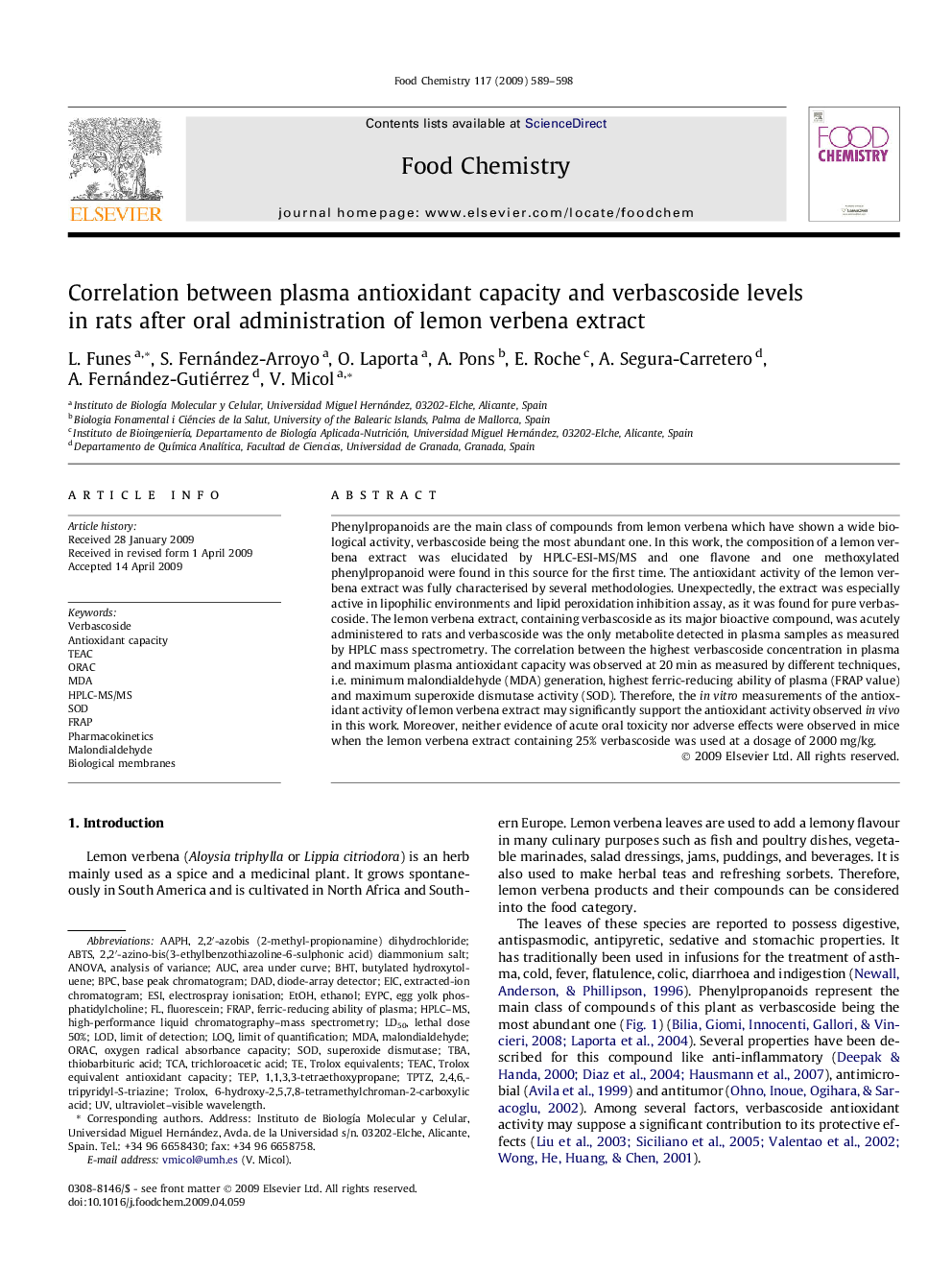| Article ID | Journal | Published Year | Pages | File Type |
|---|---|---|---|---|
| 1187454 | Food Chemistry | 2009 | 10 Pages |
Phenylpropanoids are the main class of compounds from lemon verbena which have shown a wide biological activity, verbascoside being the most abundant one. In this work, the composition of a lemon verbena extract was elucidated by HPLC-ESI-MS/MS and one flavone and one methoxylated phenylpropanoid were found in this source for the first time. The antioxidant activity of the lemon verbena extract was fully characterised by several methodologies. Unexpectedly, the extract was especially active in lipophilic environments and lipid peroxidation inhibition assay, as it was found for pure verbascoside. The lemon verbena extract, containing verbascoside as its major bioactive compound, was acutely administered to rats and verbascoside was the only metabolite detected in plasma samples as measured by HPLC mass spectrometry. The correlation between the highest verbascoside concentration in plasma and maximum plasma antioxidant capacity was observed at 20 min as measured by different techniques, i.e. minimum malondialdehyde (MDA) generation, highest ferric-reducing ability of plasma (FRAP value) and maximum superoxide dismutase activity (SOD). Therefore, the in vitro measurements of the antioxidant activity of lemon verbena extract may significantly support the antioxidant activity observed in vivo in this work. Moreover, neither evidence of acute oral toxicity nor adverse effects were observed in mice when the lemon verbena extract containing 25% verbascoside was used at a dosage of 2000 mg/kg.
